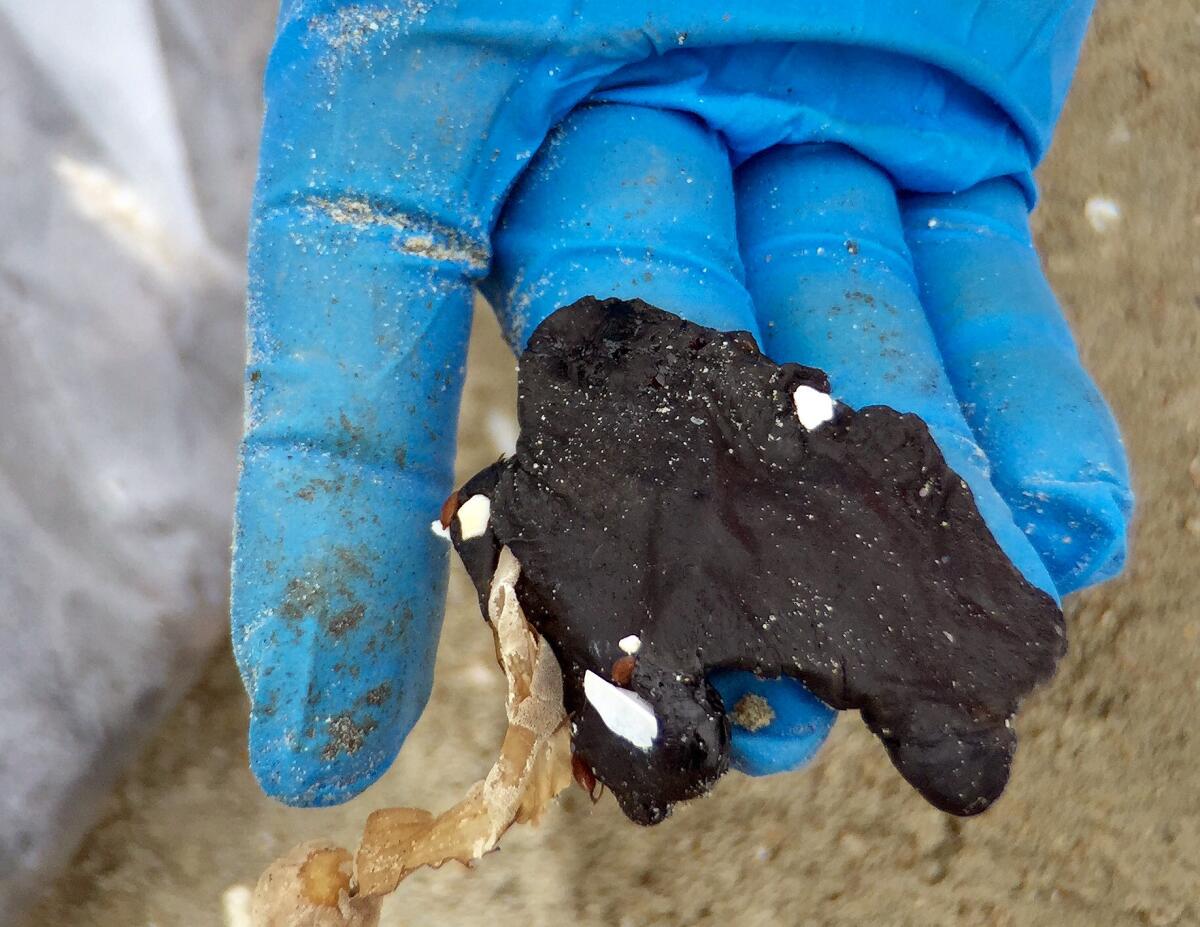Beaches reopen after crews remove tar balls on Long Beach coast

A four-mile stretch of coast in Long Beach has reopened after beaches were closed nearly two days ago when a wave of tar balls washed ashore.
Beaches between 1st Place and 72nd Place reopened at 8 a.m. Friday, but not without warnings. The Long Beach Fire Department asked residents and beachgoers to use precaution when walking on the sand and swimming in the water.
The department’s Marine Safety Division will be on the lookout for any new tar globs appearing onshore. If the gooey, petroleum-based balls should appear, officials plan to take the “appropriate measures to locate and remove the product,” said firefighter/paramedic Jake Heflin, a department spokesman.
The chunks of oil first appeared Wednesday along the Long Beach shoreline, prompting officials to close affected beaches immediately .
Crews worked through the night to remove about 55 gallons of the sticky product from beaches. The U.S. Coast Guard collected samples for testing to determine the source of the tar balls. Testing could take weeks.
While officials say they still don’t know what spurred the sudden wave of tar balls, the May 19 Refugio oil spill in Santa Barbara County is suspected. The oil spill sent 21,000 gallons of crude into the ocean.
The spill has so far killed 115 birds, 46 sea lions and 12 dolphins, according to Dana Roeber-Murray, senior coastal policy manager for Heal the Bay.
Since the spill, beaches in Malibu, Oxnard and the South Bay have seen swells of tar balls washing ashore.
After an oil spill, waves and winds break up the slick into small patches, or tar balls, that scatter into the ocean and travel hundreds of miles.
Tar balls float on the ocean surface and change their physical composition in processes known as “weathering,” according to the National Oceanic and Atmospheric Administration.
Any sightings of new tar ball should be reported to the National Response Center Hotline at (800) 424-8802.
For breaking news in California, follow @VeronicaRochaLA
More to Read
Start your day right
Sign up for Essential California for news, features and recommendations from the L.A. Times and beyond in your inbox six days a week.
You may occasionally receive promotional content from the Los Angeles Times.






